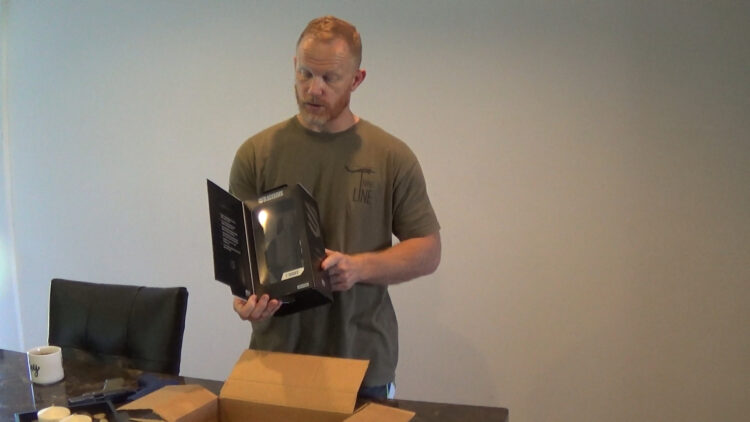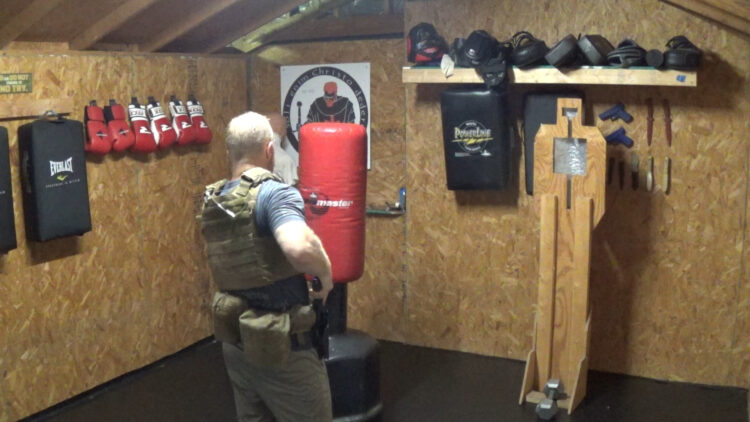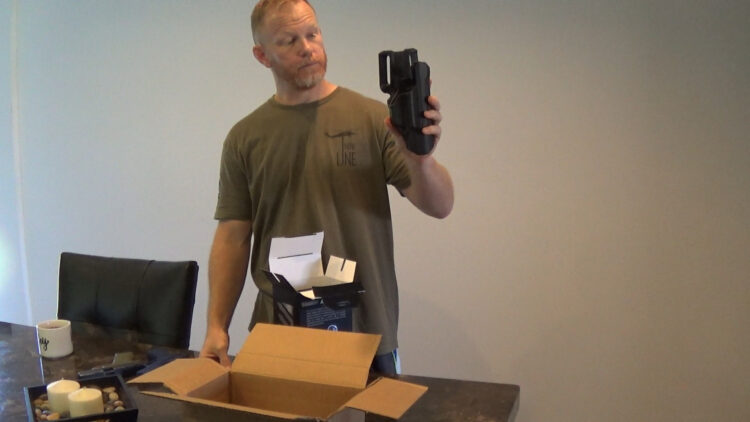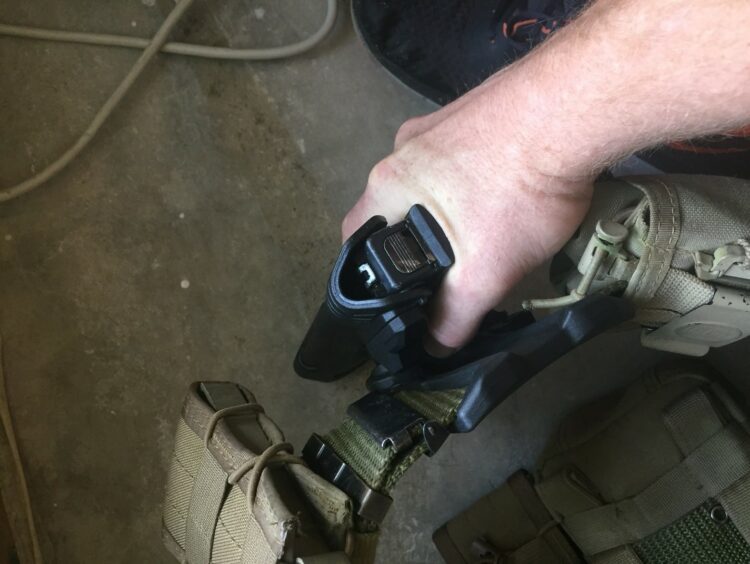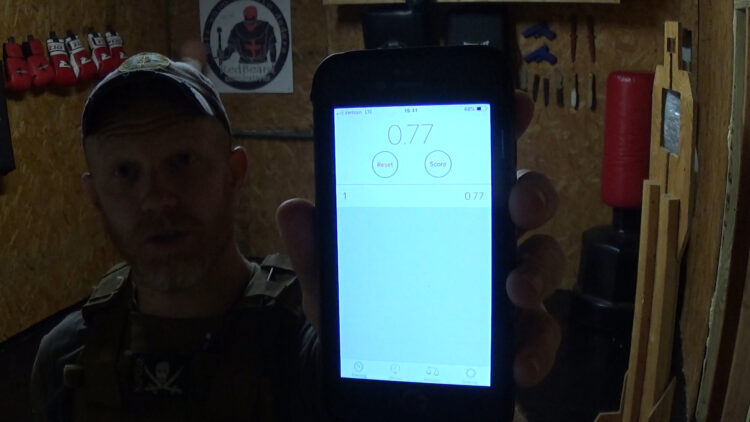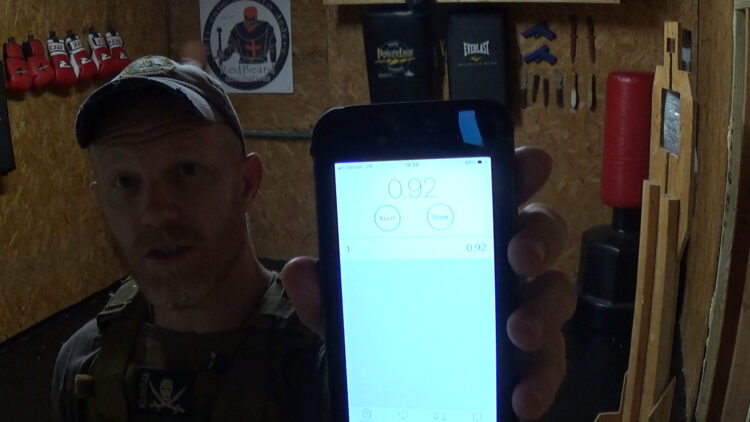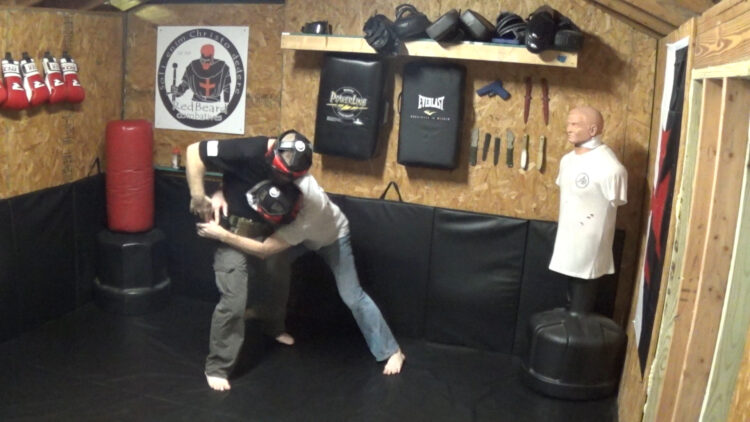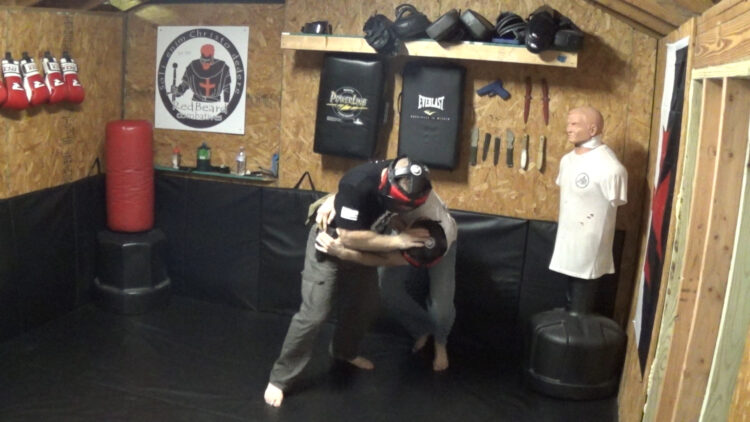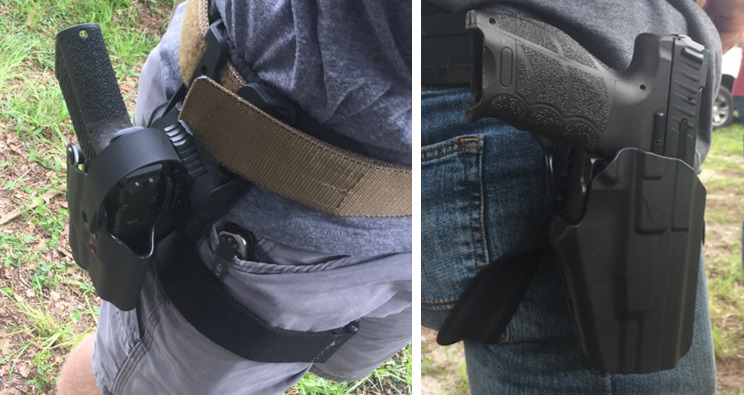By: Red, Redbeard Combatives
Is the Blackhawk T-series level 2 holster all its advertised to be? This was the question I started off with a month ago after scrolling through Instagram and coming across the holster. There were claims that it was designed on the Master Grip Principle, that it had sound dampening polymers to quiet the draw, and that it would “perform no matter the elements and situation”. Furthermore, on their website they offer a 30-day risk free trial. These are lofty claims but there are additional criteria that I look for that fall within that “no matter the elements and situation” area.
Criteria such as: does it clear body armor, is the retention mechanism robust enough to withstand Force on Force, is the holster body itself robust enough to withstand Force on Force, is the access to the weapon impeded by the retention mechanism and to what degree and finally is the retention mechanism visible and accessible to an attacker? So with that in mind I contacted Blackhawk and they were gracious enough to send me a holster to review.
Unboxing:
If you’re one of those guys who really care about “unboxing” than you’re probably not part of my target audience. The holster came to me in a box that said Blackhawk and had all the components necessary to mount the holster. Ok… it was a nice box.
Fit and Finish:
The holster assembled easily and was mounted on my 3” duty belt in minutes. I have found in the past that the mounting system for the holster can be a point of failure. Several other brands, whom I will not mention, had issues in this area. In some cases I actually had to mount a leg strap to prevent the holster from canting to a point where my draw was impeded. I was quite pleased and surprised that I did not have to do this with the Blackhawk. The holster sat perfectly where I wanted it to and did not require a leg strap.
The shell of the holster was something else I was concerned about. We will get into this in greater depth later but suffice it to say that the shell was of polymer construction and actually was quite smooth and quiet on the draw. The design I ordered was for a non-light bearing Glock 19. It fit perfectly everything from our blue guns, to our airsoft Force on Force guns all the way to the Glock 19 and 17 model pistols. The trigger guard of the Polymer 80 frames did require a slight narrowing to fit the holster but this is mainly due to the fact that it is slightly larger than the standard Glock frames.
Meeting Blackhawks Criteria:
Blackhawk claims that this holster operates on the Master Grip Principle. This was of particular interest to me because quite honestly before I had even read their claim it was actually one of the first things I noticed. If you’ve ever taken a class with me you know that we start every combatives pistol class with kinesthetic alignment and master grip. Because these two things are at the root of proper pistol fighting and marksmanship. The claim that the holster utilizes the Master Grip Principle is absolutely true. Not only that but I also found that it not only utilizes it, but encourages it as well. This was a bonus for me since I often loan out my gear to students to try things out before they buy and some of these students have not yet acquired the habit of attaining a consistent Master Grip from the holster prior to their draw.
Another claim that Blackhawk made was with respect to the quietness of the draw due to the polymers used. To be honest, this was something that I had not really considered. From my perspective in combatives the quietness of the draw falls more into the realm of pre-fight tactics than it does an active engagement however, it being a stated claim I gave it its due attention and determined that that in fact compared to some of the other retention type holsters we have in our arsenal it was definitely the quietest.
[amazon_link asins=’B001BYFQUS,B005HPWG1E,B07TGXBW5R’ template=’ProductCarousel’ store=’spoup-20′ marketplace=’US’ link_id=’a6589b03-5a3d-4a42-86ab-e61912332d5e’]
My Personal Criteria:
Ok now down to the nuts and bolts of it. Does the holster function in a fight well? In short, yes. One of the requests I made from Blackhawk was that I be given a month or two to do this review. The reason was two-fold. One, I wanted to see how the holster stood up to long term abuse and two, I wanted to see how the holster performed with different individuals from my classes with varying levels of training and experience. They agreed.
I began training with the holster with static targets getting used to the retention system. Coming from mainly a low-vis perspective duty carry is not something I have done in a long time. However, like a fish to water it all came back very quickly with my initial draws being in the sub-second range and within 15 minutes of practice times in the low 0.8’s and even a couple high 0.7’s which is consistent with my capability on other holsters. So the question of whether the retention mechanism impeded the draw was quickly answered. No, it did not.
But with a mechanism that was so smooth and effortless would it hold up to the rigors of Force on Force with people actually trying to rip the weapon from the holster. To do this I actually wore my duty setup in class against some students. I purposely did not tell them how the holster operated at first and I purposely did not attempt to defend my weapon. I merely grappled them and allowed them to grab the weapon at will. None were able to attain my weapon. This was particularly relevant to me because in the past I have seen retention mechanisms fail as well as holster bodies fail. Neither occurred here and I actually gained a lot of confidence in the design.
As we continued to train with the holster I began employing my weapon against my attackers. Whether tied up in a clinch at grappling distances or engaged in striking at kicking and punching range the holster lived up to its claims. The weapon drew smoothly and effortlessly when “I” wanted it to, and not before. I also began to show the students where the retention lever was and how it worked. Even with the benefit of this knowledge and the stresses of full contact Force on Force, none were able to retrieve the weapon.
Over the next few classes we passed the holster around and let various students try it out. We compared them to other models including a Safariland level 2 and a custom Red River Tactical level 3. Both models pictured here had visible retention levers to disengage the retention mechanisms. Both were models that in the past their owners were quite pleased with. However, after engaging in some drills of attempting to retrieve an opponents weapons with the retention mechanisms engaged every single student admitted that the design of the Blackhawk was far superior.
Summary:
So in summary, based on my assessment, the Blackhawk T-series level 2 met or exceeded every criteria they claimed and even some additional ones I felt relevant. The holster cleared my body armor fine and didn’t require a leg strap to stabilize it. It allowed for the weapon to be drawn smoothly and quietly even while actuating the retention mechanism. It held up to the rigors of Force on Force with some pretty violent individuals who took no care on whether they destroyed the holster or not. And it did so without impeding the draw process or revealing its operation to would be attackers. This is definitely one of the best holsters I have ever reviewed and nearly every student in the class who had the opportunity to use and examine it walked away with the same opinion. The price of the holster is in line with other manufacturers and to be quite honest even if it was more expensive I’d still pay the extra to get it. All that coupled with the fact that Blackhawk offers a 30-day trial period if you order directly from them and I really don’t think you can go wrong with the T-series level 2. Now we’ll see if they’ll send me a level 3 ?.
Author:
Ben has over 14 years of experience working with the U.S. Government and Private Security sectors, with a focus on training, physical security, and vulnerability assessments. He has deployed multiple times to austere locations including the Middle East and South America, as well as numerous at sea deployments providing training in vessel security aboard commercial ships transiting high-risk waters. Ben was the Assistant Team Leader on a US Department of State contract supporting humanitarian operations in Bolivia and Peru, conducting site security surveys and PSD operations in areas of civil unrest. He further provided physical security and personnel escort duties while attached to Task Force 3-10, working alongside U.S. military personnel at a forward operating base in Northern Afghanistan. Ben has provided courses of instruction in combatives to the: Army’s 101st Airborne Division at Fort Cambell, Kentucky; Joint Special Operations Command personnel in Afghanistan; various law enforcement agencies and a personal security detail for a senior general officer at Central Command in Tampa, Florida. He is also one of the primary self-defense and hand-to-hand combat instructors for Tactical Intelligence International, a military defense contractor in Orlando, Florida. He holds the rank of 2nd degree black belt in Brazilian jiu-jitsu from Fabio Novaes of the Carlson Gracie Academy in Brazil, as well as numerous competitive accomplishments. Finally, Ben possess over 20 years of experience in the fields of civil and structural engineering design and holds a formal education in Intelligence Studies from American Military University, with advanced certifications in Counterintelligence. He is a certified protection specialist, weapons instructor, licensed private investigator and guest writer for numerous security publications.


